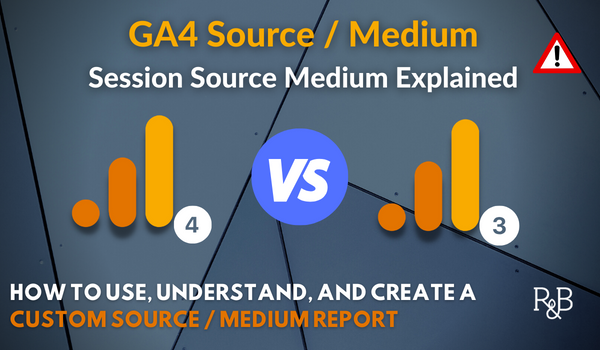The Duty of Secondary Dimensions in Google Analytics: Definition and Insights for Advanced Data Analysis
The Duty of Secondary Dimensions in Google Analytics: Definition and Insights for Advanced Data Analysis
Blog Article
Revealing the Effect of Second Dimension in Google Analytics on Information Analysis and Insights
In the realm of data analytics, the utilization of second dimensions within Google Analytics has emerged as a crucial tool for removing deeper insights and unraveling facility patterns that may or else stay covered. By peeling off back the layers of main information collections, additional measurements offer a nuanced point of view that enriches the understanding of customer behavior, web site efficiency, and the performance of marketing strategies. Nonetheless, real effect and untapped potential of additional dimensions are commonly ignored, overshadowed by the attraction of primary metrics. As we browse with the detailed landscape of data analysis, the value of secondary dimensions ends up being progressively apparent, clarifying crucial information that hold the secret to notified decision-making and tactical optimizations.
Checking Out the Idea of Second Measurements
Second dimensions in Google Analytics supply added insights by enabling users to analyze key data in combination with a secondary quality. By incorporating second dimensions, individuals can delve deeper into the information and reveal important correlations that may otherwise go undetected - what is a secondary dimension in google analytics.
Recognizing the idea of second dimensions is crucial for taking full advantage of the possibility of Google Analytics. It enables customers to sector data properly, determine patterns, and make notified choices based upon a more full picture of their analytics data. By discovering the numerous additional dimensions available in Google Analytics, users can open brand-new understandings and enhance their digital advertising and marketing efforts. Essentially, additional measurements function as a powerful tool for improving information analysis and driving actionable outcomes.
Enhancing Information Analysis With Second Measurements
Having actually established the foundational understanding of second measurements in Google Analytics and their crucial role in information analysis, the emphasis currently shifts towards leveraging these second credit to boost the analysis of analytics data (what is a secondary dimension in google analytics). By incorporating second dimensions into data analysis, experts can acquire much deeper understandings into user habits, site performance, and marketing performance

Additionally, secondary measurements help in contextualizing key information metrics by offering added layers of info. This contextualization aids in comprehending the 'why' behind the data fads, assisting experts make educated optimizations and choices to enhance overall efficiency. Ultimately, including additional dimensions improves the data analysis process, leading to even more calculated activities and significant understandings.
Revealing Hidden Insights With Secondary Dimensions
Discovering the depths of analytics information with additional measurements exposes valuable insights that would certainly otherwise stay obscured. By incorporating second dimensions in Google Analytics, businesses can discover surprise patterns, fads, and correlations that give a more detailed understanding of customer habits and site efficiency. These additional layers of data enable analysts to dive deeper right into the key dimensions, such as web traffic sources or touchdown web pages, and acquire a much more nuanced viewpoint on just how different variables connect with each various other.
With making use of additional dimensions, analysts can segment and compare data throughout various dimensions, enabling them to determine specific aspects that affect user interaction, conversion prices, and overall success metrics. By combining the primary measurement of 'device category' with the additional dimension of 'age team,' marketing experts can determine which age demographics favor accessing the website with mobile tools versus desktop computers. This degree of granularity equips organizations to make data-driven decisions and enhance their methods for far better outcomes. Eventually, discovering surprise understandings with additional dimensions enhances the depth and accuracy of information evaluation, causing even more educated decision-making and boosted efficiency end results.
Leveraging Secondary Measurements for Actionable Analytics
Building upon the understandings unveiled through additional dimensions in Google Analytics, services can now harness this enriched data landscape to drive actionable analytics and strategic decision-making. By leveraging second measurements, companies can delve much deeper into their information to extract important patterns, trends, and correlations that may have formerly gone unnoticed. This deeper degree of evaluation allows businesses to gain an extra detailed understanding of user habits, project performance, and general website efficiency.
One trick benefit of using second dimensions for actionable analytics is the capacity to sector data based on specific requirements. This division allows businesses to tailor their approaches and campaigns to various audience groups, causing extra targeted and efficient advertising efforts - what is a secondary dimension in google analytics. In addition, second measurements give a more alternative view of customer communications, allowing services to enhance their internet site content, style, and general customer experience
Making Best Use Of Decision-Making With Secondary Measurements
To enhance tactical decision-making in analytics, leveraging secondary dimensions in Google Analytics can offer a more nuanced point of view on individual habits and campaign performance. By integrating second measurements into data analysis, organizations can dig much deeper right into the specifics of their internet site visitors' interactions and engagement patterns. This additional layer of information permits an extra thorough understanding of how different variables, such as demographics, devices, or website traffic resources, impact essential performance indications.
 view it analytics
view it analytics"/>
Conclusion
To conclude, the use useful link of additional dimensions in Google Analytics plays an essential duty in boosting information evaluation and uncovering hidden understandings. By exploring this concept, one can gain a deeper understanding of customer habits and make notified choices based on workable analytics. Leveraging secondary measurements enables a more comprehensive interpretation of information and makes the most of the effectiveness of decision-making procedures.

Report this page